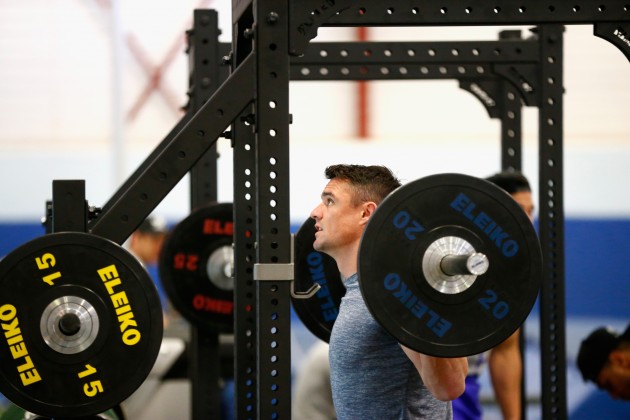Strength isn’t the only physiological quality you need to possess to be a successful rugby player but it is a crucial base from which all performance is built
This article outlines a fool-proof way for any rugby player to attain that base-level strength quicker than ever before…
Strength is not the Holy Grail for optimising performance but it is really important to understand where strength sits as a key performance indicator as basic physics tells us we need to be able to produce force to use force. Being strong allows front row forwards to scrummage as hard as they can every time they pack down. Being strong allows a centre to power their way through contact in close quarters situations. Being strong allows a winger to accelerate onto the ball at blistering pace. It is a fundamental trait which enables higher physiological qualities to be developed.
So how do we get there?
Let me introduce you to a concept of training called eccentric training. Eccentric training is the most time efficient way to build strength. As a rugby player or strength and conditioning coach trying to build your athletes’ ability to express power on the field, this is the place to start.
So why is eccentric training so important?
Every dynamic movement begins with an eccentric muscle action. An example of this could be anytime someone tries to jump in the air. As the athlete dips to generate force to propel themselves in the air this causes eccentric stress. This preloading mechanism puts the muscles in motion to create explosive dynamic movements. This is a product of the stretch shortening cycle. In short, the stretch shortening cycle consists of three phases; eccentric (stretching, pre-loading), isometric (force conversion), concentric (shortening, force expression).
An easy way to visualise this is by imagining you have an elastic band in your hand. When you pull that elastic band you create the eccentric stress, the harder you pull it the more force it creates when you let it go. In short, that is the stretch shortening cycle. Therefore, the eccentric portion to any movement is the starting point and where a majority of our force production capabilities come from. This highlights the importance of emphasising this portion of a movement in training.
How do I train the eccentric portion of the movement?
Bret Peterson and Cal Dietz (authors of Triphasic Training) advise that you train the movement as a whole emphasising the eccentric phase. Training the eccentric portion of the movement can be done in multiple ways but the safest way I have found is using submaximal loads (60-85% of 1RM) to do this. The method requires the athlete to lower the weight for five seconds and then accelerate the bar as hard as possible. This can be done for multiple reps…See an example below:
This video was at a peak week of an accommodating resistance training cycle. As you can see you can get some serious load on the bar.
If you could spend more time developing speed, power, conditioning and your skills, will you choose eccentric training to boost your strength?
Sam Portland is a Professional Strength and Conditioning Coach who consults via Sportland Training and Fitness. Sam has worked with Wasps Rugby, Rosslyn Park & Brunel University and currently works track and field and semi-pro rugby
Follow Sam on Twitter @SPORTLAND_TNF






